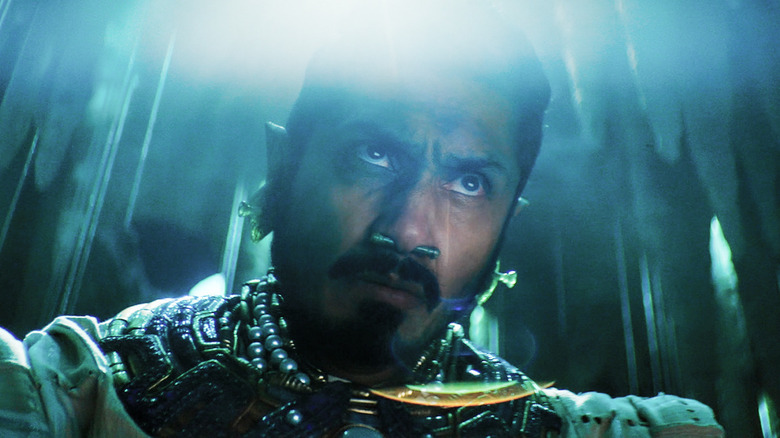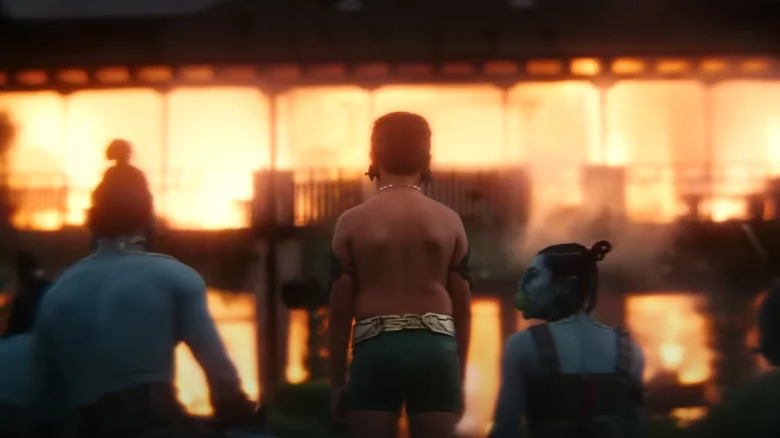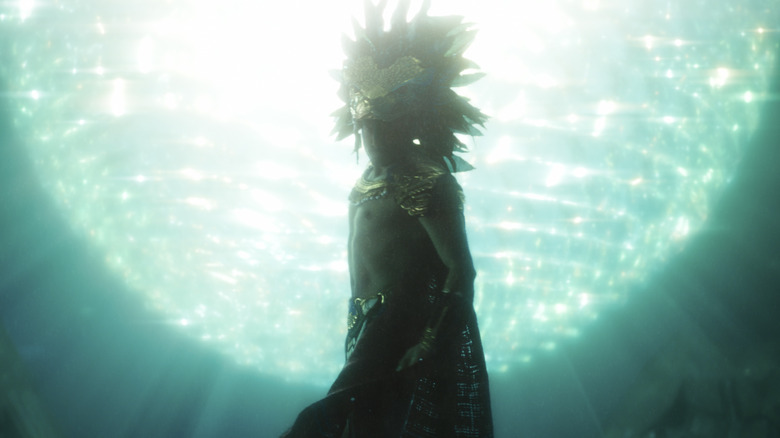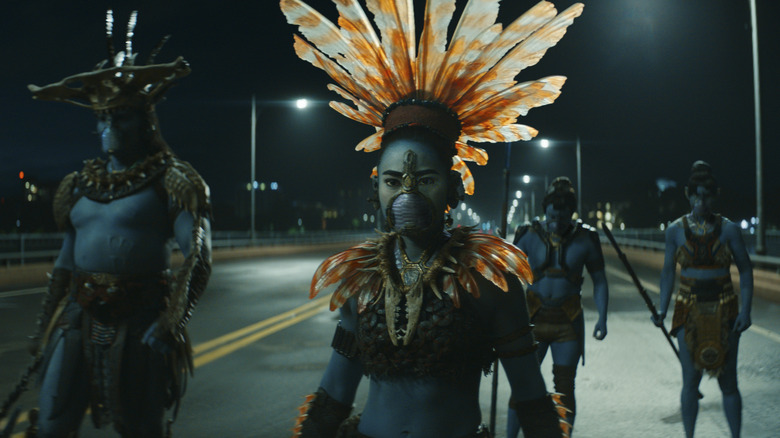How Black Panther: Wakanda Forever Changes Namor's Comic Book Origins
The Marvel Cinematic Universe has always reinvented characters and changed them from their portrayal in the comics. From Bucky being Steve Rogers' best friend from childhood, to turning Vulture into an underdog, to erasing Drax's human past, to turning Mysterio into a disgruntled employee. The franchise always takes the essence of these classic characters and updates them to fit the version of the world told in the movies and the medium of film. Sometimes the movie versions of the characters even make their way to the comics, like how Nick Fury became much closer to Samuel L. Jackson's portrayal from the films.
Now, having already changed both Killmonger and M'Baku in the first film, "Black Panther: Wakanda Forever" becomes the latest MCU film to drastically change an iconic comic book character, and for the better. Following the death of T'Challa, the film focuses on the consequences of Wakanda revealing itself to the world, with the other world powers becoming thirsty for vibranium and pushing to get their hands on some of it. So, when the Americans dig too greedily and too deep, you know what they awake in the darkness of the Atlantic Ocean. No, it was not a Balrog of Mordor, but Namor the Sub-Mariner.
Namor is one of the oldest comic book characters, and it is about time he got the spotlight in a big-budget live-action movie. That being said, the Namor we meet in "Wakanda Forever" is not the same one you may remember from the comics, and that rules.
Heavy spoilers ahead.
The Feathered Serpent God
Namor the Sub-Mariner was created by artist and writer Bill Everett and debuted in Marvel Comics #1 all the way back in 1939, becoming one of the very first Marvel comics characters alongside the original Human Torch, as well as Marvel's first antihero. Originally the mutant son of a human sea captain and the princess of the sunken kingdom of Atlantis, Namor started out as more of an antagonist, who did as much damage as he did good things. It wasn't until the '60s that he was retconned into becoming Marvel's first mutant, explaining his winged feet and ability to fly.
While that mostly tracks with the version we see in "Wakanda Forever," a lot has changed. Sure, he is still the only human-looking person among his people, who are blue (except when they're underwater). He still has wings on his feet and breathes both under and above water. But his name is no longer Namor McKenzie, but K'uk'ulkan, and he is not the king of a greek-inspired ancient and magical kingdom, but the Feathered Serpent God of a Mesoamerican-inspired realm that was born out of the Spanish conquest.
One big worry going into the film was that it would mix and match different Mesoamerican cultures in an attempt to prioritize representation for everyone rather than specificity, like the first "Black Panther" did. Though Namor is referred to by the name of a Mayan deity, he rules over Talokan, the name of the Aztec paradise. Having the stand-in for Atlantis, a kingdom of Greek legend, be a place inspired by very real cultures that are still alive today and facing real struggles, would risk continuing an unfortunate history of using the idea of the mythical Atlantis as a poor way to explain why non-European civilizations could be so advanced.
The might and tragedy of Talokan
Thankfully, "Wakanda Forever" is better than that. In one of the most surprising, and possibly best scenes in the film, we see the origin of Talokan and of K'uk'ulkan. We learn that the first Talokanil were Mayan people escaping the Spanish conquest, who took a heart-shaped-herb-like plant that gave them the ability to breathe underwater and flee the genocide happening on the surface. The herb also gave the Talokanil incredible strength and blue skin. For K'uk'ulkan, whose mother was pregnant with him when she took the herb, it resulted in a mutation that gave him winged feet.
By the time K'uk'ulkan first went to the surface to bury his mother, he found her people in chains and her home in ruins, as the Spanish killed the native population with weapons and disease, and forced their language, culture and religion on them. As for the name Namor? K'uk'ulkan chose it for himself after a priest cursed him for his winged feet, calling him a spawn of the devil and a "niño sin amor" or child without love. This was eventually shortened to, you guessed it, Namor — pronounced Nah-More.
It could have been very easy to go with a more faithful route and make Talokan an ancient civilization, to combine architectures and looks from different Mesoamerican cultures and say this is the one that originated them or that gave them technology. It would have been easy to make this version of Atlantis something more magical and connected to the cosmic side of the MCU like the comics. Instead, what the film does is similar to what the film one does with Killmonger, and roots a cartoony villain to the real world and to tragedies that continue to impact us to this day.
An important change
With these changes, Marvel makes Talokan not just a formidable nation with a grand army and a good foil for Wakanda, but it presents a tragic place with a story rooted in real calamity. This is not a once-mighty civilization that got punished and doomed to sink by some gods, but the remnants of a once-great civilization that was attacked, robbed, and slaughtered by other humans for no other reason than being different.
What's more, the fact that the Talokanil are still alive and thriving as a people in the MCU is a celebration of the very real Mayan people that are still living, and are being discriminated against on a regular basis. Namor is now not just a mutant leader of a legendary kingdom, but proof that we never left, that we are still here, and that we can be mighty too.
"Black Panther: Wakanda Forever" is now in theaters.



